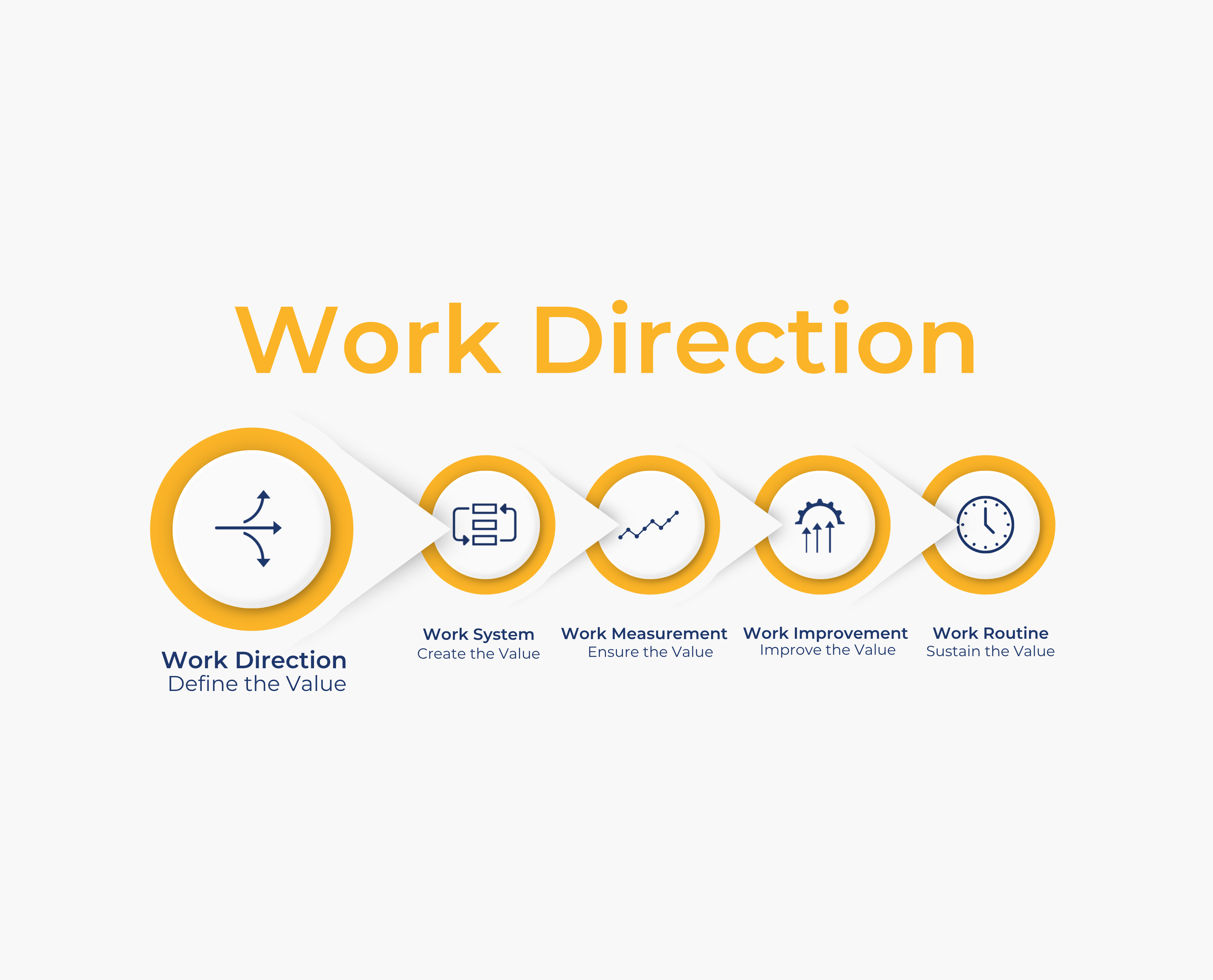When execution stalls, the usual fix is to add tools, training, or new processes. But the root issue often isn’t capability, it’s clarity. If your team feels stuck in unproductive meetings, or confused by shifting priorities and slow decisions, the real problem might be direction.
At the leadership level, we talk a lot about alignment. But we don’t always acknowledge where misalignment actually shows up, not just in strategy decks, but in the day-to-day. Here’s how directional misalignment often appears:
- Teams chasing competing priorities
- Conflicting interpretations of what “done” looks like
- Delayed decisions
- Rework caused by shifting instructions
This can be extremely frustrating for teams, everyone wants work to be smoother. But how do we get there?
Work Direction: The Foundation of Clarity
That’s why Work Direction is the first—and cornerstone—element of the Work Excellence Method. It gives structure to a question every organization needs to answer clearly: Why are we doing this work, and how do we define success?
With Work Direction in place, teams gain shared clarity around:
- The value being created
- The priorities that drive that value
- The purpose behind the work
- Why the work matters
This isn’t about generating rigid rules. It’s about defining why we’re doing the work before jumping into the what and the how.
Case in Point: A Technology Services Organization
One client, a tech services firm, had just acquired several smaller ventures. Their new executive team included former CEOs from each of those companies, each with their own ideas around go-to-market strategy, operations, and resource allocation.
Initially, we were brought in to support a rebranding initiative. But it quickly became clear the real issue wasn’t the branding alone; it was misalignment at the top. Each executive had a different direction, and they hadn’t aligned on a shared one for the new organization.
We helped them work through strategic priorities, clarify decision-making frameworks, and align the direction behind the rebrand. All of these are key components of Work Direction.
Take two examples: One team might prioritize cutting-edge technology, another might focus on education and thought leadership. Neither is wrong. But day-to-day decisions get easier—and faster—when everyone knows which priority leads.
Once direction was clear, the results followed:
- Team meetings became more productive
- Communication with the board improved
- Long-term planning expanded under shared vision
- Product development cycles shrank from 18 months to 6
- Marketing content timelines dropped from 3–4 weeks to just 3 days
Why It Matters: Alignment Before Execution
When teams operate from a shared direction:
They make faster decisions because priorities are understood
- They make faster decisions because priorities are understood
- They execute more smoothly because expectations are aligned
- They build accountability because success is clearly defined
- And they connect to deeper purpose in their work
The cost of ambiguity is real. We’ve seen teams spend weeks solving the wrong problem, just because the direction wasn’t agreed upon up front. Work Direction prevents that by turning vague intentions into aligned action.
Work Direction and the Bigger Picture
Work Direction is the starting point, but it’s not the whole picture. It connects to the rest of the Work Excellence Method:
- Work System defines how work flows
- Work Measurement makes progress visible
- Work Improvement turns insight into action
- Work Routine sustains it all
Together, these form the structure for aligning people, priorities, and processes to deliver lasting value. But it all starts with direction.
Work Direction clears the path so teams can move forward, faster and with focus. If your team is growing, shifting, or just feeling scattered, clearer Work Direction can help lead the way.
Check out the full Work Excellence Method: https://workexcellence.com/work-excellence-method-new/

